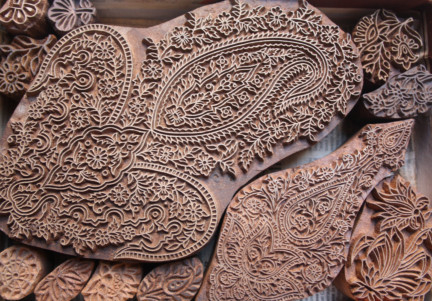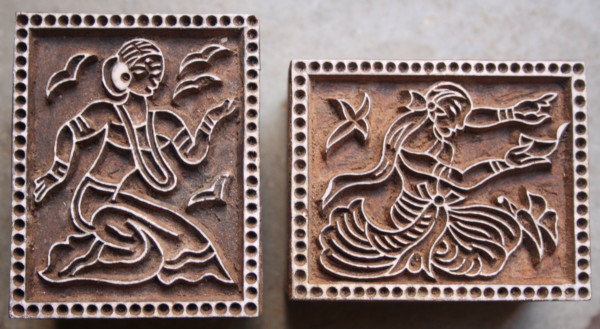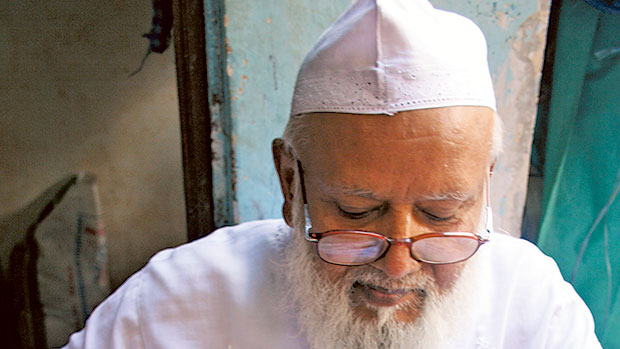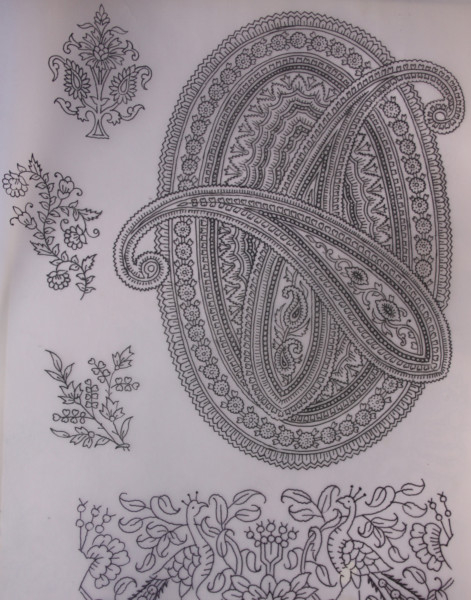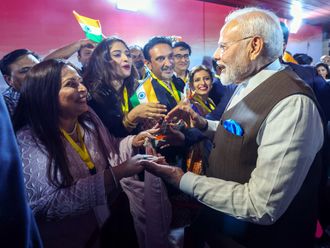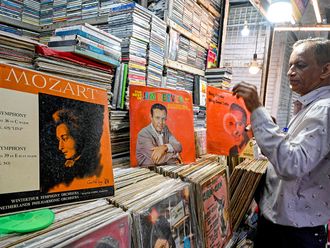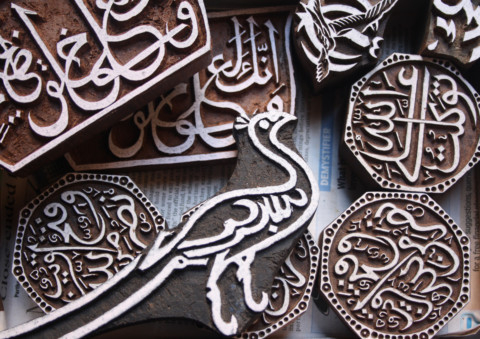
New Delhi: When calligrapher Mohammad Ayyub visits crafts fairs, he draws huge crowds. But no one approaches him to learn the art form.
“The lack of perseverance and dedication to learn for hours is resulting in the extinction of the art of calligraphy,” says Ayyub, who is from the fifth generation in a family of calligraphers and wood carvers.
The recipient of a State Award (1998), National Award (2008) and Shilpa Guru Award (2009), he speaks with the pride and tenacity of a master craftsman.
“I still try to use craft more imaginatively instead of just making wooden blocks. Probably that’s because I’m not well educated. But then, ironically, the well-educated do not want to become craftsmen,” he said.
His forefathers trained craftsmen across the country, but neither their students, nor others from his own family are continuing with the trade.
The 70-year-old, however, refuses to give it up.
Residing in Shaheen Bagh, south Delhi’s non-descript colony in Jamia Nagar, Ayyub dutifully sits carving birds, animals, human forms and Urdu and Arabic couplets on wooden blocks.
It is upsetting for him that younger generations are not pursuing this art, but then he understands that it is not possible to earn a living out of it anymore.
Ayyub, whose forefathers hailed from Farrukhabad in Uttar Pradesh, says, “Few decades ago, people had a passion for this ancient art form and, for many of us, it was a part of growing up. A lucrative art, it was also the traditional source of income for my family. My father, who was also my teacher, taught me both calligraphy and woodcarving. He had a workshop that employed 15 to 20 people and many learnt the art from him and my grandfather and spread it in several cities.”
Having studied up to Grade 8, Ayyub began making designs on paper and later on wooden blocks as a child.
He says, “Calligraphy demands an artistic mind with a creative bend and passion for lettering. Also, a vivid imagination is imperative. I had it all.”
A chance meeting with a research scholar in the 1980s led Ayyub to visit officials at the Crafts Museum in New Delhi.
At their behest, he often showcased his art at exhibitions in the city.
Finally, one day, he moved to Delhi along with his family.
Having done several experiments in calligraphy, besides engraving religious texts, which was what traditional calligraphy constituted, he says, “I carved the names of political leaders and sportspersons and engraved couplets written by renowned poets and also lyrics of ghazals.
“But as a profession, all that is a thing of the past. When I look around, there are few calligraphers and also the quality of carving has deteriorated. Not much attention is paid to detailing and the quality of wood used is inferior. For someone like me, who has devoted all his life to this art, it is not possible to make compromises. I do little work, but specifications are still very important to me.”
Explaining the process, Ayyub, familiar with the quality and type of wood used to make blocks, says, “We drew on sheesham wood and woodcutters, who knew what it was meant for, cut trees horizontally. These were left to dry for one or two years. The log was then sliced into pieces and the surface rubbed and smoothened, which was a lengthy process.
“The design to be engraved was then drawn on the wooden pieces with a pen. The engraving was done with the help of specially crafted slim iron instruments of over 30 varieties that were used for cutting, slicing and making different shapes. For, the end product had to be marvelled at and not manufactured to be just sold for a cost.”
At one time, Ayyub stood at par with the best calligraphers in the country. His brilliance can be witnessed in the many designs he has carved on wood and designed on paper.
“Only those who know about fine arts, can understand the value of it, for others it is merely a design,” he says.
When invited, he goes to craft fairs and carves letters of the English, Hindi, Urdu, Tamil and Kannada alphabets apart from traditional motifs. More than the purpose of selling his products, the idea is to make the younger generation aware of the art and promote it by displaying a variety of his works.
The calligrapher says he has never tried to project himself and does not know how to “market” his art.
“In today’s times when everything is commercialised, even my sons have taken to manufacturing wooden furniture,” he reveals.
While one may find few professional calligraphers, the young have taken calligraphy to an altogether different level.
The art is existent today in diverse forms, including being adapted to the digital media or as tattoos!
Ayyub laughs, “Imagine, calligraphy is now being taught in some institutes that offer crash courses ranging from couple of weeks to a month. But even then there are few takers.”


